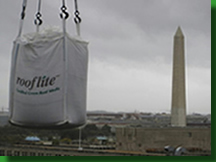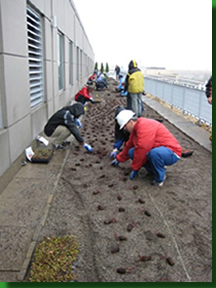In October 2008 GW took another step towards reducing its environmental footprint and serving as a prototype for others when it installing a green roof on the Elliott Building at the 1959 E Street Residence Hall and 1957 E Street Academic Building on the University’s Foggy Bottom main campus.


The E Street building was chosen because it provides high visibility for a pilot project of this nature. The green roof was installed in an area between the 1957 E Street 7th floor Conference Center and the Residence Hall to facilitate viewing from both the academic and residential portions of the E street complex.


The 1957/1959 E Street green roof was being retrofitted onto the existing roof because it was not included in the initial installation. The depth available for planting was one of the key factors for determining the best type of roof for this specific building.
Green roofs have many environmentally benefits. They provide a permeable surface in a location that otherwise would be impermeable. This means that, when it rains, the growth medium and plants will absorb some of the rainwater, thus preventing it from going directly into storm sewers. Also, green roofs act as an insulator for temperature and sound, reducing energy used for heating and cooling, reducing the temperature of the roof and providing habitat for insects. In addition, green roofs sequester significant amounts of carbon dioxide, thus helping the fight against global warming.

